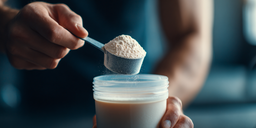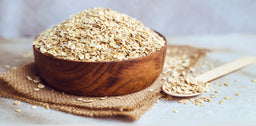
Achieving The Impossible? How To Eat For Performance And Body Composition
Achieving The Impossible? How To Eat For Performance And Body Composition
Diet and nutrition play the most vital role in body composition, and subsequently how we fuel our bodies daily. We need to provide our body with the energy it needs, for the required goals we are aiming for, in the right ways.
More often than not when people think of heavy training, they think of the ‘bulk/cut’ cycle, when it comes to a specific eating approach. This method is broken down into the cycle of bulking – where we look to put weight on, meaning our body has more fuel to draw from making us stronger, and function in a caloric surplus (i.e. we are taking on more calories than we are burning). Then following that cycle we can start cutting. Cutting is where we start to incorporate more cardio and a caloric deficit (i.e. we are taking on less calories than we are burning) providing us with greater lean muscle mass at the end of the cutting cycle. Then we repeat – bulk and cut, bulk and cut. The idea being that each time we repeat the cycle, we are creating more muscle mass with each cycle, which then becomes leaner over time. This methodology is tried and tested, and it works, but more often that not for most, who are not professional athletes (off season – bulk, to on season - cut) or bodybuilders, or if you have very specific goals, it’s not sustainable long term.
Let’s face facts – food is f***ing delicious. We want to sample cuisines and delicious food from all over the world. Not only does food bring people together, but it creates memories and bonds which can last forever. But like with anything, it’s always best to know the background information. What you’re putting into your body to keep it at it’s optimum level is the most vital thing, as it will have a lasting impact on your health and fitness throughout your life.
Calorie counting is not something I choose to go by on a daily basis, however I check in with it every so often to make sure I’m on track. And I now do that mostly by eye as I know what food equates to which macronutirents (Carbs, Fats and Protein) and their levels. What’s important for you to take away is you will need to have some level of calorie counting and food label knowledge in your life, if you are serious about training and rebuilding your body – it’s that simple. There are equation calculators on the internet you can start with. Remember these are guidelines and will, in all likelihood, need to be adjusted. These will take into account your weight, height, age, job activity and amount of time you exercise to work out which way to guide your caloric intake and how you need to skew your macros to get the results you want. This can be the first block in the pyramid.
Carbs, Fats and Protein are all essential for our survival, carbs particularly as they create the building blocks of energy. The macros are the next layer to bear in mind. If you make sure things come from whole sources and you eat a variety of fruit and veg (mostly green veg) that’s half the job done for you. Then you just have to play a little by trial and error to find which way your macros need to go. Without question, upping your protein intake will be key to that – remember to go for a variety of lean protein sources when thinking this through. I teach a method with my clients to keep track of food intake per meal by a coach a while back, which I’ve found works really well. On a regular to slightly smaller sized dinner plate, imagine between 1-2 palm sized scoops of chicken, tofu, white fish, lean mince, etc – this is your protein intake per meal. Then 1 to 1.5 scoops of healthy carbs – sweet potatoes, potatoes, brown rice, quinoa or other grains. And last but no least between 2 and 4 fingers worth of healthy fats – avocados, oils, seeds, nuts, eggs, etc. For protein targets more specific, if you’re wanting to put on muscle, between 1.8g – 2.2g per kg of bodyweight a day is optimal, but not for every body. Just remember don’t do anything drastically, give it time and always consult a dietician if you want to make full scale dietary changes. If you want to lose weight and you don’t feel like you are, start with a slightly smaller plate and scale the portions down and you can see how you’re progressing.
None of this comes easy and it take time to find what works for you. Don’t obsess over it too much as this can lead to unhealthy food relationships and eating behaviours. There’s no such thing as “bad” foods. One doughnut or some cake certainly won’t have much of an impact, but if you want to keep a handle on things like that, you can compensate by having less food on one day, for example. Again, whatever works for you and your body.
If you want to focus more on endurance, a carb and fat heavier diet will be better as you then have more fuel your body can draw from. For getting stronger and building more muscle a protein and carb rich diet is better. Tailor everything to your personal goals and you’ll find your way there.
Keep pushing, keep grinding away and stick with it, your diet will come good in the end and you’ll be able to see just how far you’ve come!












































